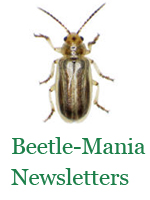Trabutina mannipara (Hemprich and Ehrenberg)
[Homoptera: Pseudococcidae]
Biology | History | Status | Management | Weeds | Literature | Links
Both adult and immature mealybugs feed on plant sap and may also inject salvia which is toxic to the host plant. Trabutina mannipara occurs on saltcedar, Tamarix jordanis or T. nilotica, growing near the Dead Sea and Sinai areas in Israel. Young females secrete a tough, waxy egg sac that encloses her as it grows. Eggs are laid inside the egg sac and young nymphs escape through an opening in the sac and crawl over the foliage. How crawlers disperse to new hosts is not known although other mealybug nymphs are wind borne. Second instar nymphs move only short distance before establishing a feeding site. Third instar nymphs do not move but produce large amounts of white wax which covers their body. Large numbers of nymphs feed together in colonies which may cover plant terminals. Adult females are wingless while males are winged. The complete life cycle may vary from 30-40 days in midsummer to 90 or more days during cooler weather. Two to three generations may be completed in the field. In Israel, T. mannipara is known only from areas warm enough for citrus to grow. In the US, this zone extends north to Phoenix and Tuscon, AZ and the Rio Grande Valley of Texas.
The host range and biology of Trabutina mannipara have been studied in Israel and under quarantine at the USDA-ARS Research Laboratory in Temple, TX. No releases are pending as of February, 2000.
This agent is for the biological control of saltcedar.
DeLoach, C. Jack. 1996. Saltcedar Biological Control: Methodolgy, Exploration, Laboratory Trials, Proposals for Field Release and Expected Environmental Effects. Saltcedar Management and Riparian Restoration Workshop. Las Vegas, NV. US. Fish and Wildlife.

